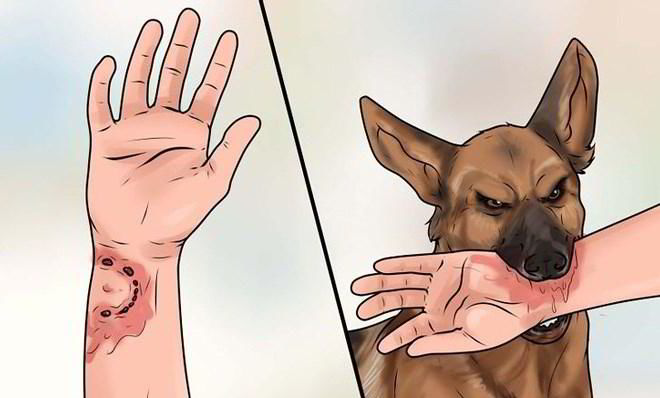1. Introduction
Being bitten by an animal, especially a dog, can cause serious injuries and pose a risk of infection or rabies. Timely first aid is crucial in minimizing complications. This article will guide you on how to properly handle a bite wound and the necessary follow-up steps.
2. First Aid Steps for Dog Bites
Step 1: Stay Calm and Assess the Wound
- If the bite is minor, causing only a scratch or light bleeding, it can be managed at home.
- If the wound is deep, bleeding heavily, or appears severe, seek medical attention immediately.
Step 2: Clean the Wound
- Rinse the wound thoroughly under clean running water for at least 10-15 minutes.
- Use mild soap or an antiseptic solution like povidone-iodine to disinfect the wound.
- Do not try to squeeze out blood if the wound is not bleeding heavily.
Step 3: Control Bleeding (If Excessive)
- Apply gentle pressure to the wound using a clean gauze pad or cotton cloth.
- If bleeding does not stop after 10 minutes, go to a medical facility immediately.
Step 4: Disinfect and Bandage the Wound
- After cleaning, reapply an antiseptic solution (povidone-iodine or hydrogen peroxide).
- Cover the wound with a sterile gauze dressing to prevent infection.
3. What Not to Do When Treating a Bite Wound
- Do not apply leaves, turmeric powder, or other home remedies to the wound.
- Do not cover the wound too tightly, as this may trap bacteria inside.
4. When to See a Doctor
You should seek medical attention immediately if:
- The wound is deep, has torn skin, or bleeding does not stop.
- The area around the wound becomes swollen, red, painful, or starts oozing pus.
- The bite is on the head, face, neck, fingers, or near a joint.
- The vaccination status of the biting animal is unknown.
- You haven’t had a tetanus shot in the past five years.
5. Rabies Vaccination After an Animal Bite
Assessing the Risk of Rabies
- If the biting dog/cat has been fully vaccinated, observe it for 10-15 days.
- If the animal is stray, wild, or behaving abnormally, get vaccinated immediately.
Rabies Vaccination Schedule
There are two primary methods of rabies vaccination:
- Intramuscular regimen: 5 doses on Days 0, 3, 7, 14, and 28.
- Intradermal regimen: 4 doses on Days 0, 3, 7, and 28.
In high-risk cases, doctors may also administer rabies immune globulin (RIG) for enhanced protection.
6. Preventing Animal Bites
- Avoid teasing animals, especially unfamiliar ones.
- Vaccinate pets against rabies as recommended by veterinarians.
- Use protective measures when handling wild animals.
7. Conclusion
Timely first aid and proper vaccination can prevent serious complications from animal bites. If bitten, follow the steps outlined above and seek medical advice promptly for appropriate treatment.

 Tiếng Việt
Tiếng Việt
